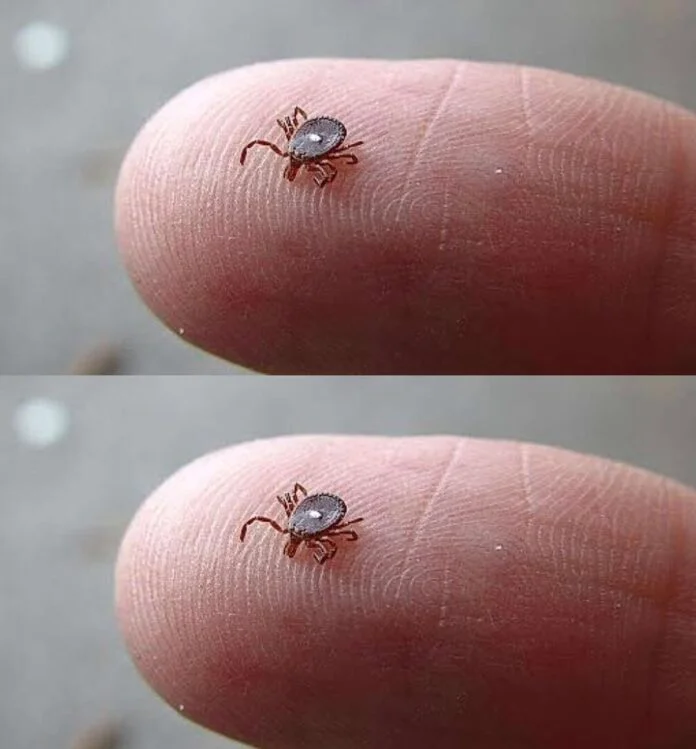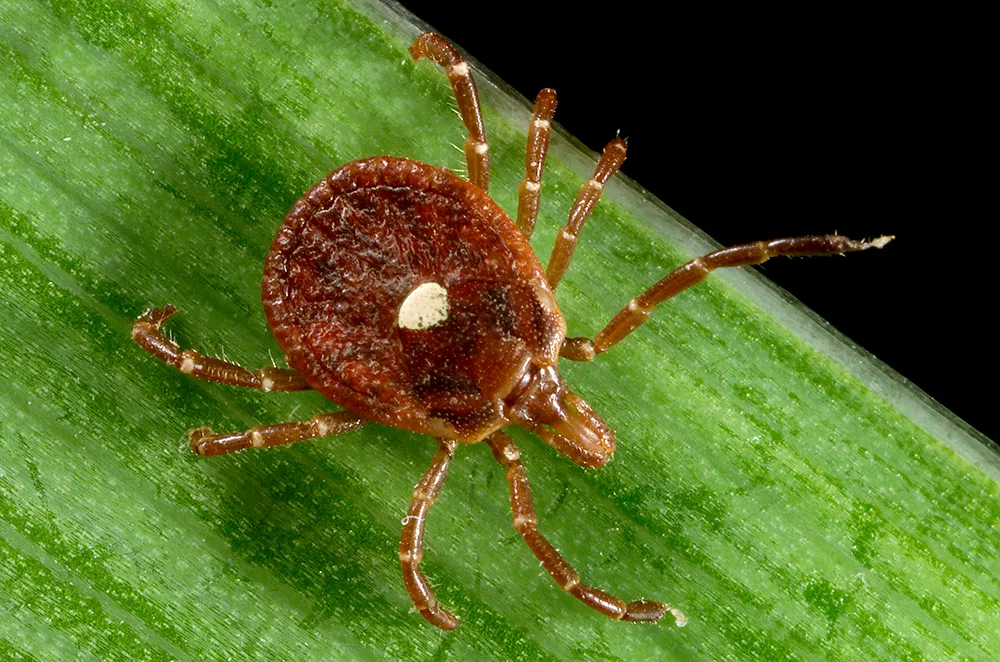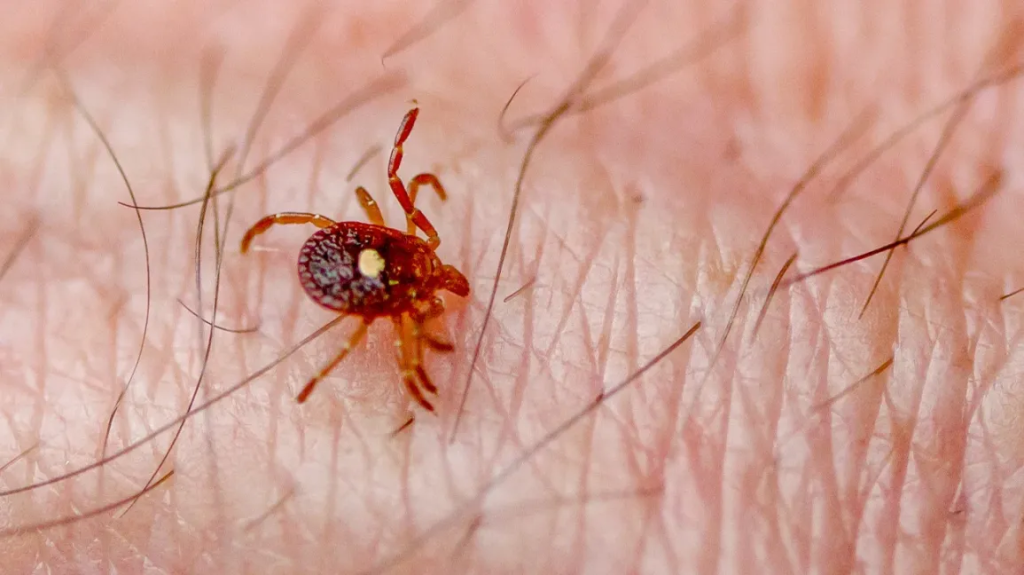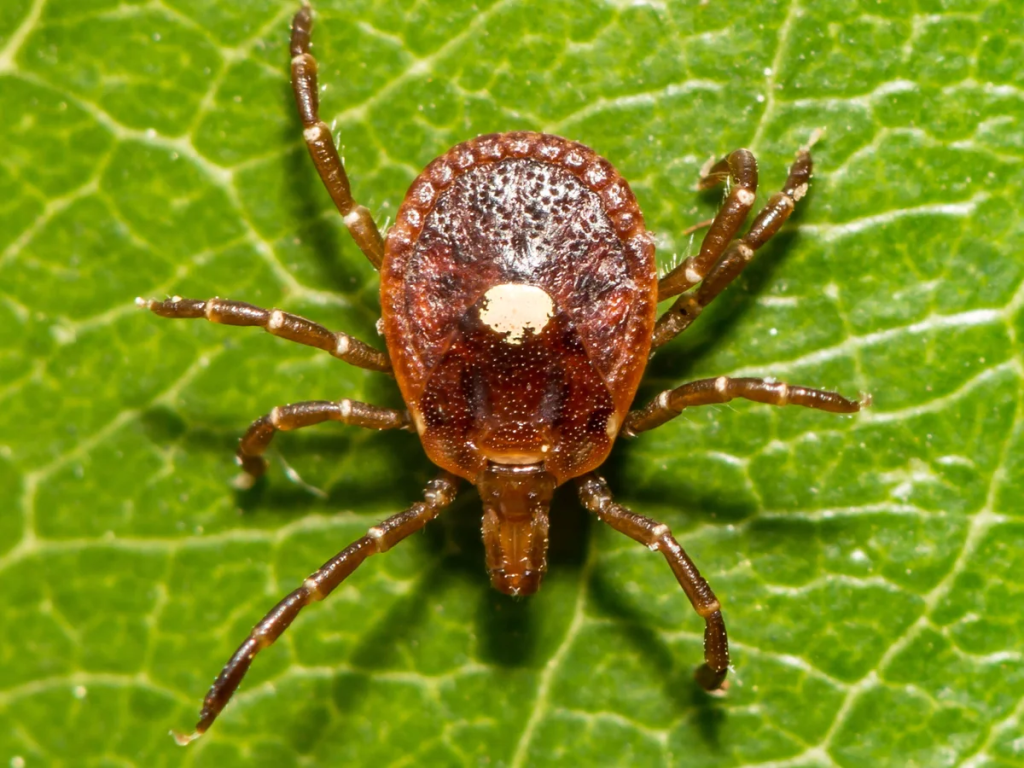Let me paint the scene: backyard, blistering sun, me wrestling a stubborn old lawnmower. My golden retriever, Mochi, was sprawled out under our oak tree like he owned the place. I was hot, tired, and just trying to get the grass cut before sunset. Then it hit me—that weird, creepy-crawly feeling on my ankle.
At first, I figured it was just another mosquito doing its thing. But when I looked down? Nope. Not a mosquito. It was a lone star tick—and that tiny white dot on its back stared at me like a warning sign.
I didn’t know it then, but that bite would kick off a crash course in what these little monsters can do. And trust me, if you ever cross paths with one, you’ll want to know exactly how to handle it.

What Exactly Is a Lone Star Tick?
It’s easy to think all ticks are basically the same, but the lone star tick is on another level. These things are small, reddish-brown, and the females have a single bright white dot on their back—hence the name.
But here’s what makes them a real problem: they’re aggressive. Unlike other ticks that passively wait on tall grass, lone star ticks actively hunt. If you’re warm-blooded and breathing, you’re on their radar.
You’ll mostly find them in the southeastern and eastern United States, but they’re spreading fast. If your backyard has thick vegetation or you like hiking in wooded areas, you’re in their stomping grounds.
Video: How A Bite From A ‘Lone Star’ Tick Can Trigger Severe Allergy To Meat
Don’t Panic—But Do Act Fast
The first thing I did (and regretted): panic. I flailed, I swatted, I considered lighting my leg on fire. But here’s the better move: stay calm and act with purpose.
If you find a lone star tick on your skin:
- Don’t squeeze, yank, or twist.
- Don’t try to smother it with Vaseline or essential oils.
Instead, grab a pair of fine-tipped tweezers, get as close to the skin as possible, and pull the tick straight out with slow, even pressure. You want the tick gone—but in one piece. Leaving parts behind can lead to infection.
Once it’s out, wash the area thoroughly and disinfect your tweezers. And yes—wash your hands, even if you didn’t touch the tick directly.
Save the Tick (Gross, But Necessary)
This next step might seem disgusting, but it’s smart: keep the tick.
Drop it in a small jar, seal it in a plastic bag, or sandwich it between pieces of tape. Write the date and location of the bite. This way, if you start to feel sick, your doctor can identify what kind of tick bit you and what diseases it might’ve carried.
Having that info could speed up diagnosis and treatment big time.
Monitor Your Body Like a Hawk

Getting bitten isn’t the end of the world—but what happens after matters more. The lone star tick is linked to:
- Southern tick-associated rash illness (STARI)
- Alpha-gal syndrome (a bizarre meat allergy you do not want)
- Fever, fatigue, muscle aches, and other flu-like symptoms
For the next few weeks, pay close attention to your body:
- Watch the bite site for rashes, swelling, or a red bullseye
- Track symptoms like headaches, body aches, or strange fatigue
- If anything feels “off,” call your doctor immediately and tell them about the tick
It’s better to overreact than overlook something serious.
How to Keep Lone Star Ticks Away

That one bite was enough to turn me into a full-time tick prevention enthusiast. Here’s what I do now—and what you should too:
- Dress the part: Long sleeves, pants tucked into socks, and light-colored clothes to spot ticks easily
- Use repellent: DEET, permethrin, or picaridin-based sprays are your best bet
- Tidy the yard: Keep the grass short, trim bushes, and clear leaf piles
- Pet protection: Mochi never misses a dose of tick prevention meds now
- Post-outdoor routine: Shower as soon as you come inside and do a full-body tick check (don’t forget behind the ears, waistline, and around the ankles)
- Hot dryer trick: Toss your clothes in the dryer on high for 10 minutes—it kills any ticks you didn’t notice
Lone Star Ticks Aren’t Just a Southern Problem Anymore
Video: Lone Star Tick Warning
Maybe you live up north and think ticks like this are only a problem in the Deep South. Not anymore. Lone star ticks are spreading—fast. Climate changes, shifting ecosystems, and increased outdoor activity are all contributing.
So whether you’re hiking in Georgia or gardening in Ohio, you should be on alert. These pests don’t care about your zip code. They just want a warm body and a free meal.
The Takeaway: Stay Sharp and Don’t Wait

Looking back, I’m lucky. I caught the tick early, handled it (once I stopped freaking out), and stayed on top of symptoms. Now, I’m a lot more careful—and you should be too.
If you feel that little tickle on your skin while you’re outside? Don’t ignore it. Take a look, take action, and protect yourself. Knowledge really is your best defense.
And hey, maybe retire that ancient lawnmower while you’re at it. You’ve got enough to worry about without breathing in fumes and fighting with rusty handles.


